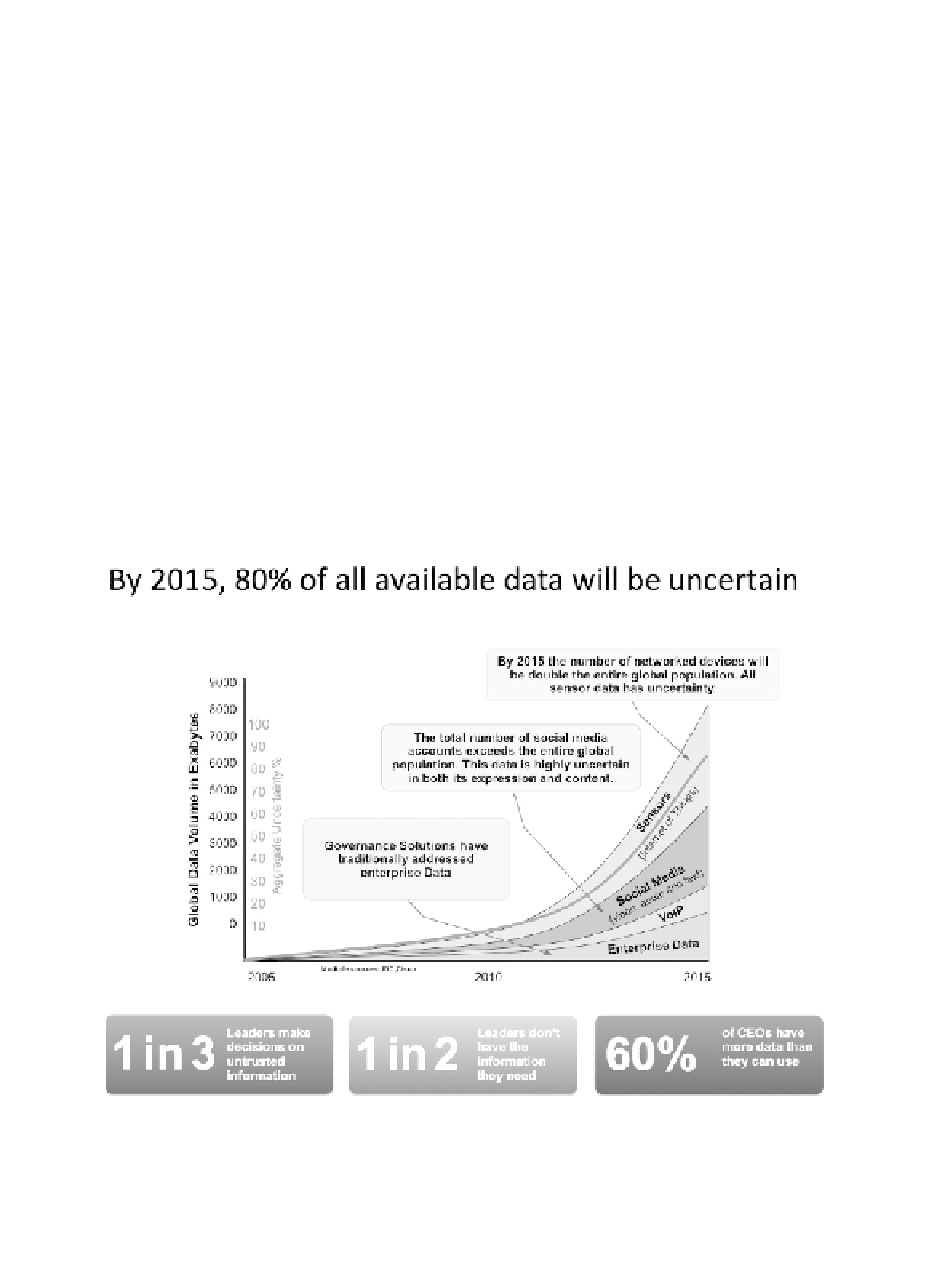Database Reference
In-Depth Information
analyze? The reality is organizations are competing on information
and
analytics—and in order for the information to be acted upon, it must be
trusted. While we all want data to be trusted, there are classes of data where
this may not be entirely possible. For example, do you trust a random tweet?
It depends—think about the Mexican presidential election we talked about
in Chapter 1. In essence, enterprises acquire and create data they trust, but
they will undoubtedly have some data they can't entirely trust. For this
data, a risk estimate and assessment is required. This is a key point that's all
too often overlooked. That risk estimate has to be attached to the data and
decision-making processes that come in contact with this data need to know
about it. In fact, processes should be forced to look at the assessment before
acting on the class of data. The end goal of the work that you perform on the
integration and governance of your data is
trusted information
. That said,
studies have shown that in most organizations, business users don't trust
the information that they use in their day-to-day jobs. In a Big Data world,
as shown in Figure 10-1, there are more sources that dilute our ability to
Figure 10-1
Trust in data decreases as the increasing variety of sources and volume of
data makes data more uncertain.





